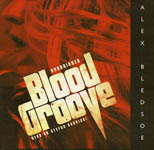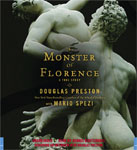
 Blood Groove
Blood Groove
By Alex Bledsoe; Read by Stefan Rudnicki
7 CDs – Approx. 8.5 Hours [UNABRIDGED]
Publisher: Blackstone Audio
Published: 2009
ISBN: 9781433243880
Themes: / Fantasy / Urban Fantasy / Vampires / Revenge / Love / 1970s / 1910s / Memphis / Wales /
When centuries-old vampire Baron Rudolfo Zginski was staked in Wales in 1915, the last thing he expected was to reawaken in Memphis, Tennessee, sixty years later. Reborn into a new world of simmering racial tensions, he must adapt quickly if he is to survive. Hoping to learn how his kind copes with this bizarre new era, Zginski tracks down a nest of teenage vampires, who have little knowledge of their true nature, having learned most of what they know from movies like Blacula. Forming an uneasy alliance with the young vampires, Zginski begins to teach them the truth about their powers. They must learn quickly for there’s a new drug on the street created to specifically target and destroy vampires. As Zginski and his allies track the drug to its source, they may unwittingly be stepping into a trap that can destroy them all.
The vampire is the Mr. Potato Head of Fantasy fiction. It’s an old and worn out monster, fully mythologized with more than 100 interchangeable preternatural powers and weaknesses from which to assemble a fully customized vampire. For what might be a complete list of them check out the terrific website TVTropes.org. It cites a wonderfully cynical list of vampire tropes under the title: “Our Vampires Are Different.” So then the question is: If there is nothing really new under the sunless skies of vampire fiction why do we pick up them up? It’s a good question and one worth pondering. I picked up Blood Groove in large part because of the title. I liked the pun, figuring it referred to a blood groove (or fuller) on a sword and/or the idea of groovy 1970s vampires and/or the dado in a forensic pathologist’s slab. And before I picked up Blood Groove I noticed other Bledsoe books (probably a pun to be made there too) had cute titles like: The Sword-Edged Blonde and Burn Me Deadly.
Alex Bledsoe doesn’t give any new power to the vampire that he hasn’t had before, but he does add a new figurative kryptonite (like sunlight and garlic and crosses) to the mix. In fact, it’s creation and dissemination is central to the plot of Blood Groove. Along the way we also get an historical setting (1975), a virtual tour of parts of Memphis, Tennessee, some trivia about Elvis Presley and a relatively unpredictable story.
One of the elements that surprised me was not knowing who the protagonist of Blood Groove was. The vampires seemed the focus, and yet there was almost nothing that could make them sympathetic in a heroic or anti-heroic way. We’d meet one, he’d be killed, and then I thought “Okay…and?” but the story wouldn’t explain – which was a nice move actually. So for a good chunk of the novel the characters, all well fleshed out, appeared in scenes, died or were killed, only to be replaced by new characters with new agendas and new back-stories. The period shifted too. First we are in 1975 Memphis, then 1915 Wales. Eventually it settles down and we’re given fresh references, almost devotionals actually, to two early 1970s movies Blacula and Vanishing Point. As with many an urban fantasy novel these days there’s a mixing up of sex and love. Blood Groove doesn’t feel particularly paranormal romancy – but it’s probably not too far from the edges of curve.
Narrator Stefan Rudnicki gives voice to about a dozen characters of mixed gender, ethnicity and accent. Most obviously the East European vampire Baron Rudolfo Zginski has a suitably Bela Lugosi type accent. As with every Rudnicki read audiobook I’ve heard his rich voiced narration in Blood Groove is always in service to the text. One reviewer on Amazon.com put it well: “[Reading Blood Groove] was like eating a brownie with nuts when you don’t like the nuts.”
The trailer for Vanishing Point:
The trailer for Blacula:
Posted by Jesse Willis

